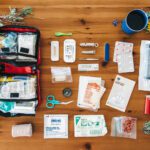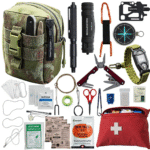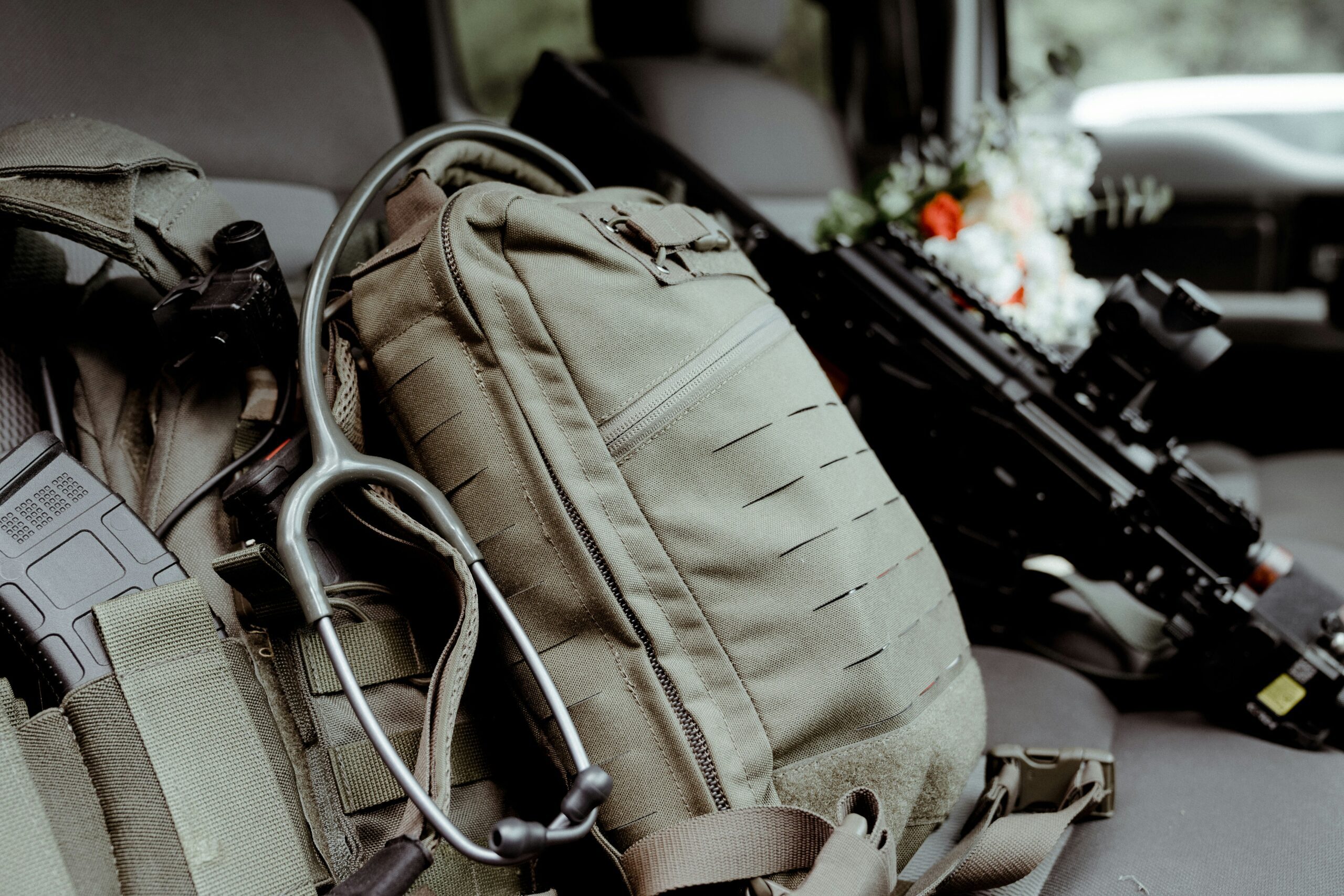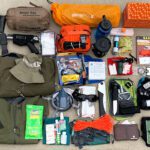An INCH bag is a long-term survival pack designed for long-term use. It’s meant to provide essential items in times of emergency when people must survive without access to supplies or home comforts.
Minimum capacity should range from 70L to 80L and materials used should have high water resistance. Furthermore, it must have an internal frame as well as two zippered compartments.
Paracord
Paracord is a lightweight and highly versatile cord originally developed for parachute suspension lines. With its 7-9 inner strands that are easily unraveled, paracord can be used for many different purposes.
Paracord can be an invaluable addition to your gear arsenal for hunters, campers, preppers and anyone interested in survival skills. It’s lightweight and can be used to construct various shelters that will keep you safe when faced with wilderness or emergency situations.
Paracord comes in an array of colors and lengths, from two feet up to 1,000 feet. Ideally, you’ll have multiple spools so that you can switch out the cord as needed.
Camping with paracord in bright, bold colors is an excellent way to ensure your gear is easily visible in the wilderness. Plus, using paracord can be used to securely tie down tents, hammocks, backpacks and other gear for added durability.
Another option is to braid paracord strands into bracelets to carry it with you on your body. Braided cords are more efficient than long lines of cord since they take up less room and you can even wear them as lanyards to attach items like flashlights or radios.
Paracord can be cut and used for fishing lures, an effective way to attract fish in the wild. Furthermore, its strands can be tied together and used as shoe laces if you find yourself without shoes and need something to hold them securely.
Paracord can also be knotted into a rope that can be used to pull someone from an hole or into water in an emergency situation. While this isn’t the most practical use for paracord, it could come in handy if you need to rescue someone.
Paracord is not only useful in survival situations, but it’s also an essential item that should be in any bug-out bag. This affordable and durable piece of equipment can be helpful with various tasks like patching up injuries, tying together gear, or pulling out a fallen object.
Fire Starters
When camping or backpacking, having a reliable fire starter is one of the most essential items in your gear. Not only does it help boil water, cook food, signal rescuers and warm shelters; but fires provide psychological comfort and motivation in otherwise desolate circumstances.
If your camping gear doesn’t come with a fire starter, there are some simple ways to make one yourself. Simply carve a notch in wood or plastic and insert tinder inside. Additionally, focus the sun’s rays on the tinder using plastic or glass pieces if available.
Another simple method for starting a fire is using cotton balls soaked in petroleum jelly. These balls burn rapidly and will provide you with warmth quickly.
Make a fire by dipping paper in melted wax and placing it underneath some kindling or tinder. This method works even if the wood is damp.
Wax melts when in contact with tinder and ignites it quickly, making this an effective way to start a fire when conditions are dry or you don’t have other sources of ignition available.
A ferro rod is another tool that can be used to start a fire. Crafted from an alloy, this tool produces hot sparks when struck with something sharp.
Magnesium flint strikers are another great option for starting a fire. Although they require some practice to use, these fire starters can be highly effective. These typically cylindrical objects feature an area where you can strike them to generate sparks.
You can also start a fire by touching the leads of a 9-volt battery to a wad of steel wool. This allows current to pass through its fibers and ignite it, creating small flames in the process. Although this method works as an alternate fire starter, it’s not as reliable as matches or lighters.
Knives
When packing for a bug out bag, knives often get overlooked. While you may carry a 9mm pistol and some magazines, knives are essential to building shelter and performing other survival tasks.
A quality survival knife is an indispensable tool for any outdoor adventurer’s collection. These blades can be used for various tasks, such as cutting wood for your shelter or cutting grasses and leaves to waterproof the roof of your shelter or create a fishing trap.
Your survival knife can also be useful for cutting cordage or rope. Nylon rope is the most common choice, but you may use other materials like jute.
Making your shelter with a survival knife can save time and effort. By cutting the rope or cordage into smaller sizes, it becomes easier to handle and store for later.
When shopping for a knife, quality is essential. Make sure your knife can withstand regular use and abuse without losing its edge. The most popular blade steel option for survival knives is 1095 carbon steel; this durable material holds its edge well and requires little sharpening.
It’s essential to invest in a high-quality sheath for your knife. This will keep it safe and in excellent condition when not being used, while also making sure it’s easily accessible when you need it most.
You can get a sheath designed specifically for your knife. Some sheaths feature an open top, while others have a flap over the opening secured with either magnetic catch or snaps. The ideal sheath will provide maximum protection and be durable enough to withstand any wear and tear your blade is likely to experience while in storage or when travelling.
Shelter
Shelter is a term that describes any place that shields you from the elements or other people. This could be an outdoor area in the wild, or it could be an indoor structure designed for safety.
When in the wilderness, you’ll need a way to shelter yourself from rain or cold weather. To do this, make sure your backpack contains plenty of clothing that can withstand elements and keep you warm at night.
If you plan to stay out in the woods for some time and require shelter at night, bringing a tent is recommended. It will fit easily into your INCH bag without taking up too much room – making it an excellent addition to the kit.
Another option is to bring a survival hatchet that can help cut logs and branches for your shelter. It would make an excellent addition to any toolkit, especially if you plan on setting up camp in the woods.
When camping in the wilderness, you and your family must find a secure area that won’t let any unwanted animals in. Additionally, ensure there’s enough food and water available at all times.
Making a shelter can be done in several ways, but the primary aim should always be keeping yourself and your family secure. You can do this by providing an area where people can rest safely out of the sun’s UV rays as well as having enough water and food available at all times.
Sheltering in a shelter is often recommended when exposed to hazardous environments or when it’s too hot outside to stay out of the sun. Additionally, taking refuge is important if your home needs to be evacuated due to natural disaster or emergency.
When faced with the unavoidable need to leave your house, you must find a secure place where you can spend the night and wait for things to improve. While this may take some planning and preparation, having an emergency plan should always be top of mind.







